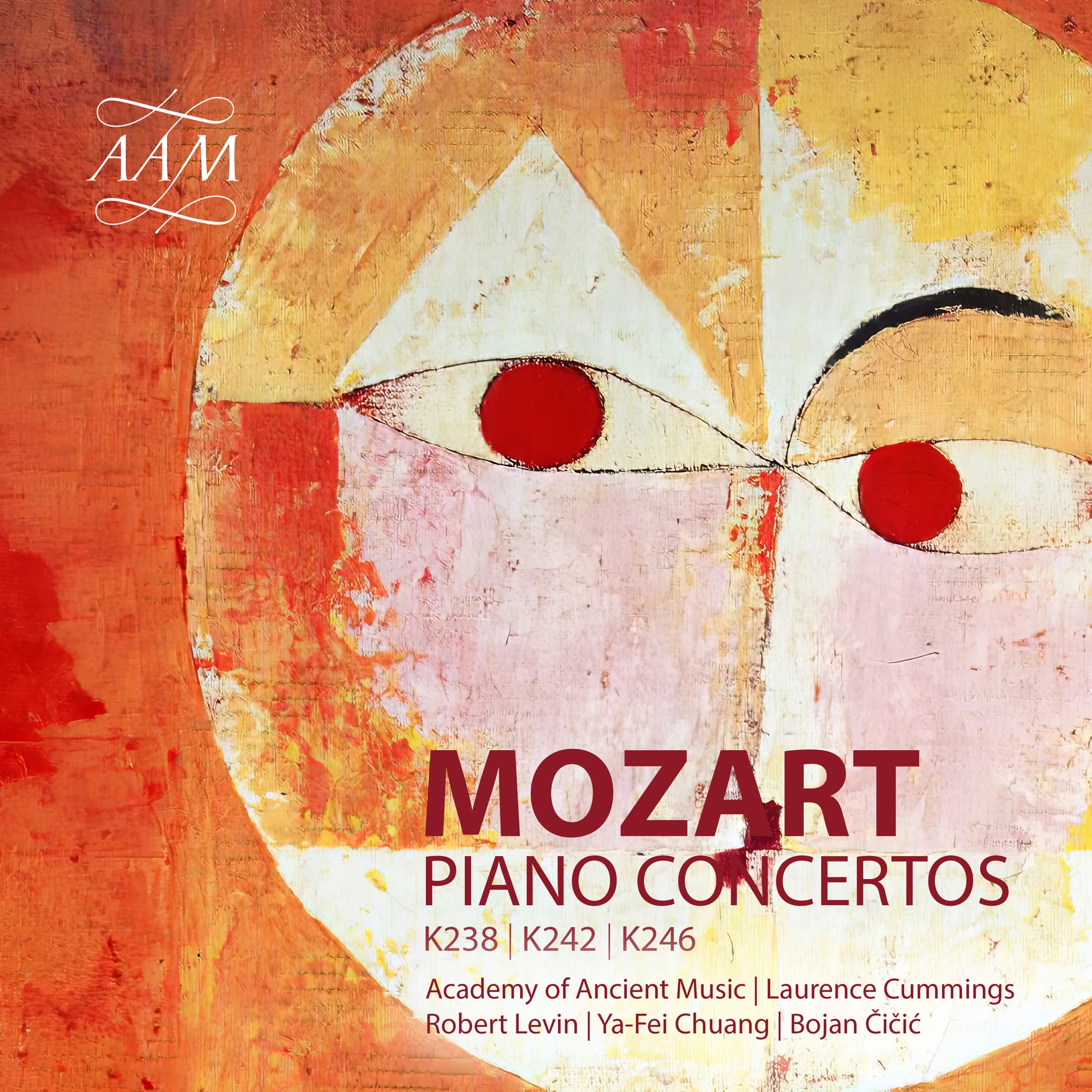Robert Levin's Mozart cycle: the penultimate instalment
A truly superb disc. Only one release away from completion, this miracle of a project continues to illuminate and delight

This is the penultimate volume of Robert Levin's epoch-making Mozart Concerto series with the Academy of Ancient Music; you can find a previous post on the concertos K 242, 315f and 365 here.
All three concertos here - No. 6, in B flat, K 238, No. 7 for Three Pianos in F, K 242 and Concerto No. 8 in C, K 246) - were composed in early 1776, in Salzburg.
Mozart's designation of his concertos as for 'cembalo' is a generic indication for 'keyboard,' and Cliff Eisen in his scholarlynotes explores the ramifications o this ins some detail. No. 6 is performed on a Tangentflügel (as is K 246), in design like an early piano or a harpsichord but equipped with a number of stops to fuse qualities of clavichords, harps, harpsichords and indeed pianos. This is an instrument from Regensbug Germany, dated 1794 and by the major tangent piano maker Franz Jacob Spath (who made a partner of his son-in-law, Christoph Friedrich Schmal, hence the designation “Spath & Schmahl” for this particular instrument, one of 20 such surviving examples. A cherry satin case on this Tangentflügel meets eboby keys (with sharps in bone tops).
The Concerto No. 6 opens with a bright and breezy “Allegro aperto,” fresh as a daisy and full of energy. Accent are punchy; vitality is all. Remember also that Levin impresses his cadenzas, and how beautifully he does so. But it is Mozart's perfect ingenuity that is all here, Levin and his players totally at the surface of genius. The recording supports all of this perfectly, here and throughout: Adrian Peacock as producer and editor, and Neil Hutchinson as engineer act as the perfect team, the venues All Hallows, Gospel Oak (May 2022) and St Giles' Cripplegate (July 2022):
The serenade-like Andante un poco Adagio features delicious woodwind contributions. This is surely the reference for this movement out of all available recordings; the spirit of chamber music is omnipresent. Levin finds a sure sense of line via his tangent piano that honours Mozart's almost operatic melody:
Levin's limpid, touching cadenza here is simply perfect. And as for teh finale, the gentilité of the imitations between string sea winds has to be believed to be heard. Levin plays with complete resonance with Mozart, his sense of style beyond reproach, his fingerwork on point always. few recordings are completely beyond criticism; this, I would posit, is one of them. Again, the cadenza fits perfectly, blissfully short and with a teasing misdirection of trills at the end:
The Concerto for Three Pianos in F, K 242 (No. 7) begins with a march-like theme complemented by a more supple response. Performed on the combination of tangent piano (Robert Levin), fortepiano (Ya-Fei change, playing a Chris Maene 2021 replica of an Andreas Stein, Augsburg 1786 piano forte) and harpsichord (Laurence Cummings), this same concerto was heard in Mozart's own arrangement for two keyboards in Volume 11 of this series. The timbral effect is striking as the one cedes to the other, and one echoes another:
The central Adagio is a dream, that idea of timbral exchange now an ever-so-civilised passing of the Mozartian baton, phrases beautifully considered from all three (equal) players:
The finale, a Rondo in Tempo di Menuetto, is positively vibrant; the brief cadenza comes as a great surprise, too:
The final concerto here is N0. 8 in C, K 246, performed byLevin, again with improvised cadenzas; and how wonderful the cadenza in the first movement, Levin's harmonic tweaks speaking volumes:
The Andante seems downloaded from Heaven itself, a continuous stream of consciousness, Levin in his most expressive form, and at one with his players; the finale is full of felicitous touches from the players and unexpected twists and turns from Mozart himself, each relished Levin and his AAM players:
A truly superb disc. Only one release away from completion, this miracle of a project continues to illuminate and delight.
A - 430 Hz, Vallotti temperament.
You can buy this superlative disc from Amazon here. Spotify below.
